China’s culinary landscape is a tapestry woven with regional flavors, historical influences, and a relentless pursuit of umami. Among its many treasures, Bào Chǎo Yáng Gāo Ròu—or Stir-Fried Lamb with Spices—stands as a fiery testament to the nation’s love affair with bold, aromatic dishes. This dish, a cornerstone of northern Chinese cuisine, marries tender lamb with a cacophony of spices, cooked in a blaze of heat that sears flavors into every fiber. To understand its allure is to embark on a journey through history, geography, and the alchemy of the wok.
The Origins of a Classic
The roots of stir-fried lamb trace back to China’s nomadic past, where herders in regions like Ningxia, Gansu, and Inner Mongolia relied on sheep for sustenance. These arid, grassland territories, with their harsh winters and vast steppes, shaped a cuisine centered on hearty, protein-rich meals. Lamb, prized for its resilience and flavor, became a staple. Early iterations likely involved roasting whole animals over open fires, but as cooking techniques evolved, so did the desire for quicker, more intense flavors. Enter the wok and the art of chao—stir-frying—a method perfected over millennia to lock in nutrients and create textures that dance on the palate.
The Anatomy of Flavor: Ingredients That Ignite
At the heart of Bào Chǎo Yáng Gāo Ròu lies the lamb itself. Typically, young lamb (under six months old) is chosen for its tenderness and mild gaminess, a counterpoint to the dish’s assertive seasoning. The meat is sliced thinly against the grain, ensuring rapid cooking and a melt-in-the-mouth texture. But the true magic unfolds in the spice blend, a carefully calibrated mix that varies slightly by region but often includes:
- Cumin: Earthy, warming, and slightly bitter, cumin seeds are toasted before being ground, releasing their aromatic oils.
- Dried Chili Peppers: Providing a fiery kick, these are often deseeded to control heat, leaving a vibrant red hue and smoky undertone.
- Sichuan Peppercorns: Not true pepper, but the berries of the prickly ash tree, they deliver a numbing, tingling sensation (ma la) that elevates the dish’s complexity.
- Garlic and Ginger: Freshly minced, these aromatics form the flavor base, their pungency tempered by high heat.
- Soy Sauce and Vinegar: A splash of dark soy sauce adds depth, while vinegar brightens the dish with acidity.
- Scallions and Cilantro: Added at the end, they contribute freshness and a pop of color.
The Dance of the Wok: Cooking Technique
Stir-frying is a high-wire act of timing and temperature. The process begins with a searing-hot wok, its surface glistening with a thin layer of oil—often peanut or vegetable for their high smoke points. The lamb is added first, seared in batches to prevent steaming, ensuring a caramelized crust. Removed briefly, the wok is then recharged with aromatics: garlic, ginger, and chili peppers sizzle furiously, their fragrance filling the kitchen. The lamb returns, followed by a symphony of spices, each added in quick succession to avoid burning. A final drizzle of soy sauce, a toss of scallions, and the dish is plated, sizzling and irresistible.
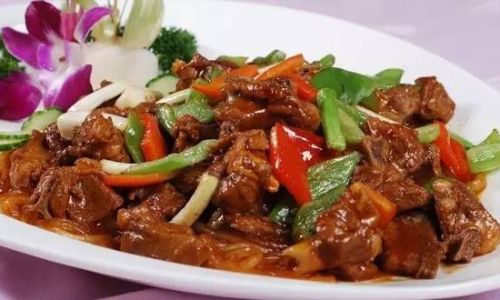
The term bào chǎo itself—literally “explosive stir-fry”—captures the drama of this technique. The wok’s high sides and concave shape concentrate heat, creating a vortex that chars ingredients while preserving their juiciness. It’s a method that demands focus; one misstep, and the spices could scorch, or the lamb overcook.
Cultural Significance: More Than Just a Meal
Bào Chǎo Yáng Gāo Ròu is not merely sustenance—it’s a cultural emblem. In northern China, where winters are unforgiving, the dish’s warmth and protein-rich profile make it a comforting staple. It often graces communal tables during festivals, weddings, and family reunions, its spicy aroma symbolizing hospitality and abundance. The act of sharing a plate of stir-fried lamb, torn apart with chopsticks and paired with steamed bread or hand-pulled noodles (la mian), fosters connection, turning a meal into a ritual.
The dish also reflects China’s historical trade routes. Cumin, a spice native to the Mediterranean, found its way to China via the Silk Road, integrating into local cuisines. Similarly, chili peppers, introduced by Portuguese traders in the 16th century, became indispensable in Sichuan and beyond. Bào Chǎo Yáng Gāo Ròu thus embodies culinary globalization, a fusion of Old World and New.
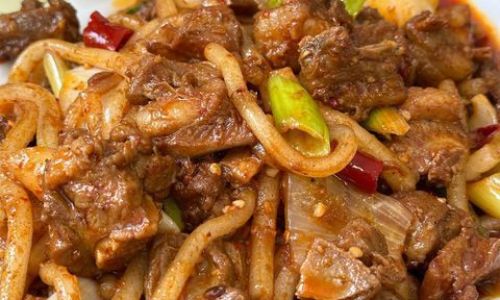
Regional Variations: A Tapestry of Taste
While the core recipe remains consistent, regional adaptations abound. In Ningxia, the dish might feature local Hui Muslim influences, with a heavier hand on cumin and mutton. In Sichuan, chefs amplify the ma la profile, doubling down on Sichuan peppercorns and chili oil. Xinjiang-style stir-fries often incorporate diced tomatoes and onions, adding a sweet-tart contrast. Even within provinces, variations emerge: some cooks add bell peppers for crunch, others include fermented bean paste (doubanjiang) for depth.
Health and Nutrition: Balancing Indulgence
Despite its reputation as a hearty indulgence, Bào Chǎo Yáng Gāo Ròu offers nutritional merits. Lamb is rich in protein, vitamin B12, and iron, while spices like cumin and ginger aid digestion and reduce inflammation. However, the dish’s high sodium content (from soy sauce) and reliance on oil warrant moderation. Modern adaptations often use leaner cuts, reduce salt, and incorporate vegetables like bok choy or carrots for balance.
The Global Stage: A Dish Reimagined
In recent decades, Bào Chǎo Yáng Gāo Ròu has transcended borders, appearing on menus from New York to Sydney. Chefs worldwide have reinterpreted it, blending techniques and ingredients. Some versions substitute lamb with beef or tofu, while others garnish with herbs like mint or basil. Food trucks in the U.S. might serve it as a taco filling, while fusion restaurants pair it with couscous or quinoa. Yet, purists argue that true authenticity lies in the original’s unapologetic spice and smokiness—a reminder that some flavors are best left untamed.
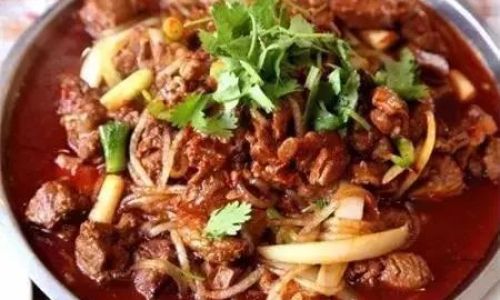
Making It at Home: Tips and Tricks
For those eager to recreate the dish, a few pointers ensure success:
- Choose the Right Cut: Leg or shoulder meat works best; avoid overcooking to prevent toughness.
- Marinate Wisely: A brief marinade in soy sauce, cornstarch, and rice wine tenderizes the meat.
- Control the Heat: Preheat the wok until smoking, and use a high-smoke-point oil.
- Toast Spices Separately: Toasting cumin and peppercorns before grinding maximizes flavor.
- Serve Immediately: The dish is best enjoyed piping hot, with the spices’ aromatics at their peak.
Conclusion: The Fire Within
Bào Chǎo Yáng Gāo Ròu is more than a meal—it’s a celebration of China’s culinary ingenuity, a dish that transforms humble ingredients into an explosive symphony of taste. From the steppes of Inner Mongolia to bustling city kitchens, it endures as a reminder that true flavor is born from fire, spice, and a dash of audacity. Whether savored in a rustic farmhouse or a Michelin-starred restaurant, this stir-fried masterpiece continues to ignite passions, one sizzling bite at a time.
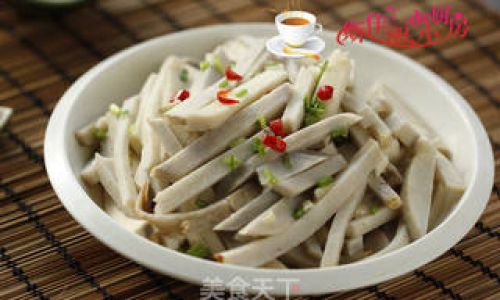
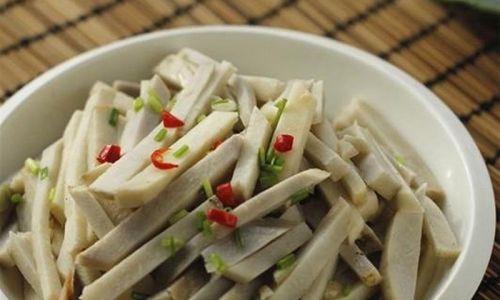


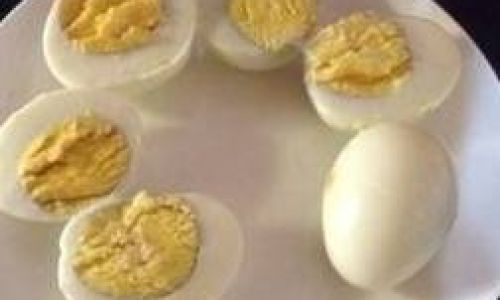

0 comments